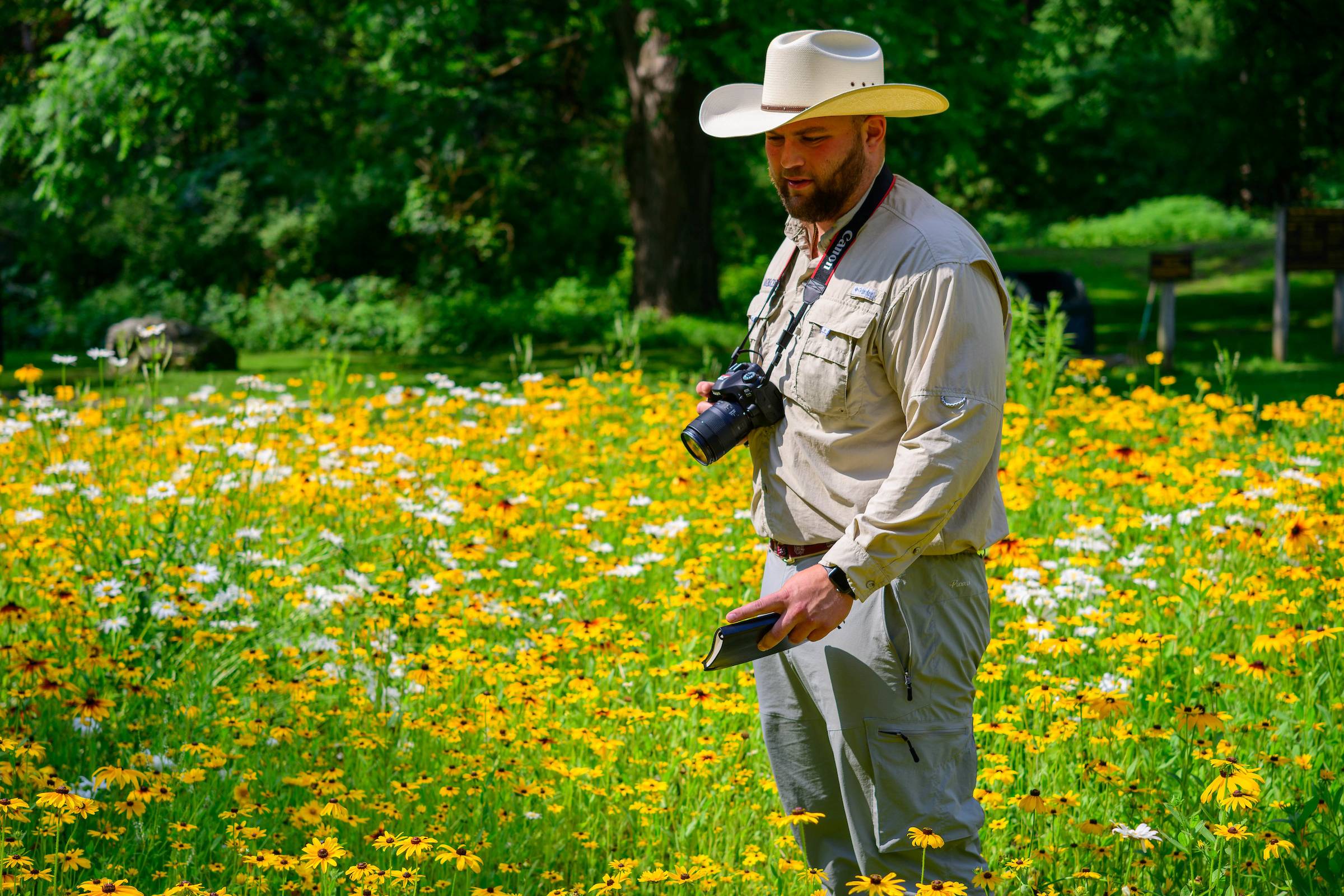Matthew McGeary ’24 took a look at the local bumblebee population at Rogers Center during the summer of 2023.
As Matthew McGeary ’24 writes:
The project I have undertaken is called the “B-Team,” a new endeavor started by Ellen Rathbone of Rogers Center that inventories the ever-so-important bumblebees present at Rogers Center and in central New York. This project fits into my studies and future interests because I would like to continue with my geography education in graduate school, with the goal of working in sustainability. I am greatly interested in the world around me and specifically the natural environment. So, when I received the research fellowship opportunity through Colgate’s Upstate Institute Field School, I jumped all over it.
Rogers Center is a nonprofit that works with the New York State Department of Environmental Conservation. Their mission is to excite the community about the natural wonders of central New York, educate people about the importance of the environment and local ecosystems, and motivate people to get involved with the environment. The small Rogers Center staff is an all-hands-on-deck team. Everyone wears multiple hats to get things done. They promote their environmental and educational mission through annual community events, school programs, Adventure Camps, adult programs, and more. This year they introduced the B-Team, a project which I am helping to get off the ground, to address the concerning population decline of native bumblebees.
I have been tasked with the startup and initial research for the B-Team. I organized the project, set data guidelines, started the promotion of the project, and laid the foundation for a hopefully long-term project here at Rogers Center. We aimed to inventory the bumblebee species in central New York, and the focus of my work specifically, was to inventory the species present at Rogers Center, as well as helping to organize the data being gathered through the B-Team’s wider project on iNaturalist, targeting all of central New York.
Bumblebees play a critical role in the proper functioning of the natural environment, and their population decline should be alarming to everyone. Bumblebees are also imperative to central New York’s agricultural industry, offering a special technique of pollination (buzz pollination) needed for certain cash crops. For these reasons, bumblebees are considered a keystone species.
Bumblebee populations are in serious decline, and in order to address this issue, we first had to inventory and conceptualize exactly what is happening. I walked miles a day collecting important data for the B-Team at Rogers Center. I would strategically wander the four parcels of land at the center, taking pictures and recording spatial data of the bumblebees I was observing. Later, I would compile all of the data and identify the species that I found out in the field.
I found a population of Northern Amber Bumblebees (Bombus borealis), which is considered an imperiled species in New York State. They are a beautifully fuzzy species native to northern North America. B. borealis is seeing rapid population decline, with only a few records of it in the state since 2000. It is both encouraging to know that they are present at Roger Center, and an exciting find for the B-Team that could lead to future grants.
Recently, Rogers Center was awarded a grant for Pollinator Habitat Restoration, in which we plan to reseed the Adam’s Farm parcel of Rogers Center with native wildflowers (bumblebees and other native pollinators food of choice), replacing the invasive species of honeysuckle, Dame’s Rocket, and garlic mustard. Invasive species are yet another problem the environment faces in tandem with climate change.
Overall, this project was a personally fulfilling one for me, but it also has a much broader importance than just personal fulfillment. I was able to utilize my knowledge from being a geography major in areas of data collection, management, and analysis using software like ESRI’s ArcPro and StoryMap. It was fulfilling for me to be able to see my training in the classroom come full circle with real-world applications. I was able to communicate the complications of Bumblebee population decline through the framework of climate change. Climate change is more than just global warming or sea level rise. Climate change is also seen through declining biodiversity, and specifically through this project, declining bumblebee populations. The species right in our backyards are just as important as other species experiencing population decline that get most of the media attention. Understanding that climate change is all around us, and not some far-off phenomenon, was a goal for this project.
I certainly appreciate the wealth of knowledge that is the Rogers Center staff, as they have opened my eyes to many facets of our changing world. I hope to one day use this admiration of the environment and knowledge gained through my Colgate experience to work in the field of sustainability and combat the threats of climate change to make my mark on the world.
The Field School is much more than a research fellowship with a community partner. It is the opportunity to gain practical experience and skills necessary to effectively enter the workforce at a high level as well as a deeper understanding and appreciation of central New York — the place that I have called home the past three years. This was my first experience with the Field School, and I am happy I decided to participate. The chance to participate in the B-Team project at Rogers Center was one that I did not want to pass up. The opportunity to spend my summer at the naturally beautiful Rogers Center, deepen my appreciation for the environment, and work on a project that can make a difference is something for which I am extremely thankful.
Many thanks to the Upstate Institute Field School for support.
